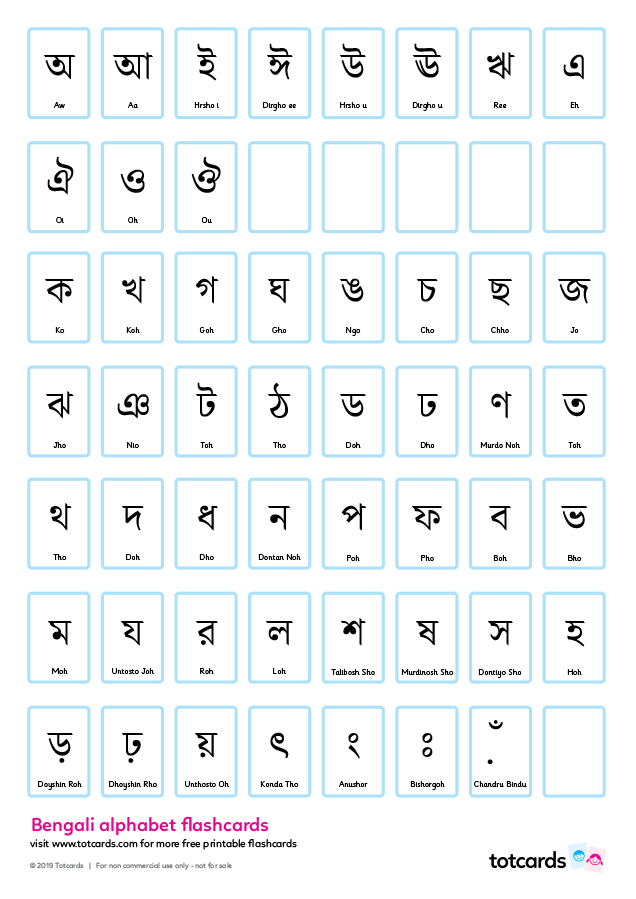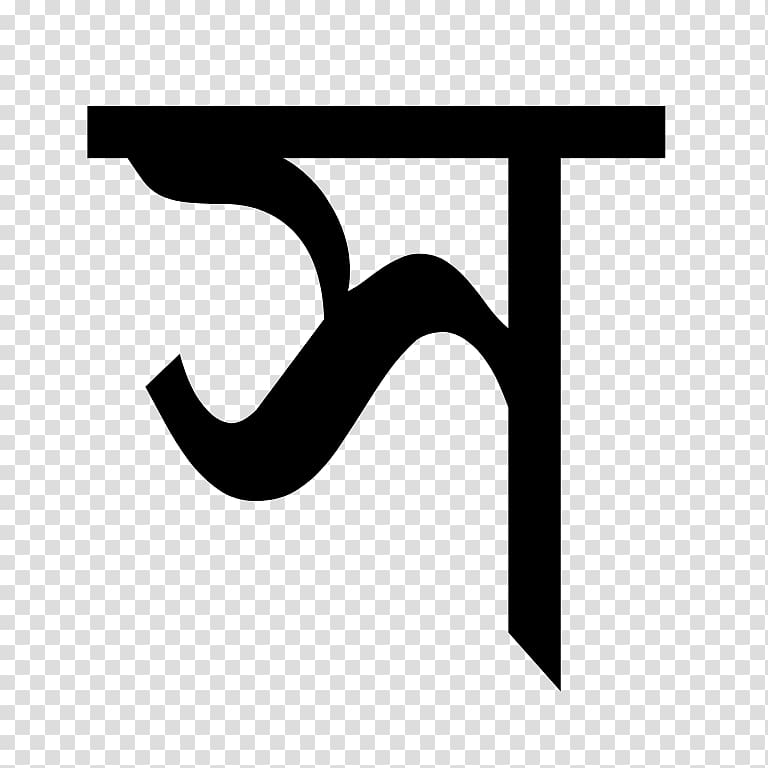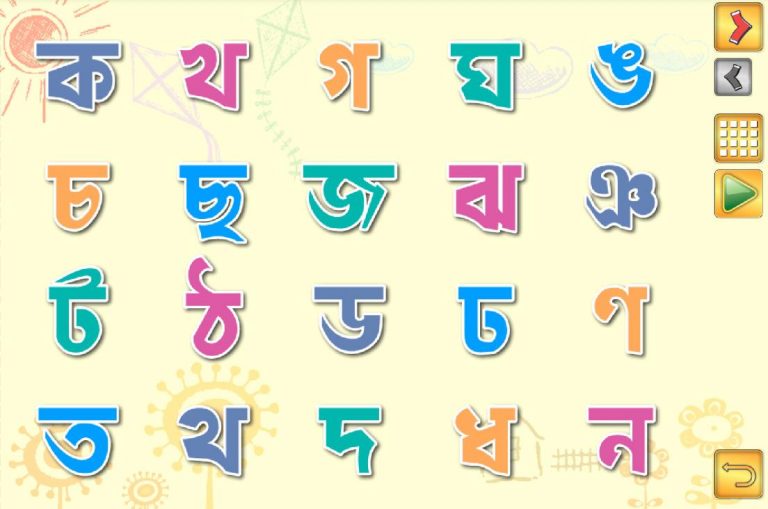

This is the same transliteration scheme that is used in Wikipedia. There pronunciation and transliteration of the vowels as used in this wikibook are given in the following table. According to linguistic study, spoken Bengali actually has seven vowels, অ, আ, ই, উ, এ, ও and অ্যা. Bengali alphabet has eight vowels, a semi vowel and two diphthongs. The simplification and standardization of the Bengali version of the script in the 19 th century CE is credited to writer and philosopher Ishwar Chandra Vidyasagar.The Bengali for 'vowel' is 'স্বরবর্ণ' (sbôrô bôrnô, /sbɔrɔ bɔrn̪ɔ/). Later, it became more closely tied to the Bengal region and standards were developed for each of the languages which use it today. In medieval times, the Bengali-Assamese script was used to write a variety of different languages in eastern India, including Sanskrit. This evolved from Siddham, a script which has since lived on in Buddhist studies, and was itself derived from Brahmi. The Bengali script is one variety of the Bengali-Assamese script, also used for Assamese and other languages. There is also extensive use of ligatures, which combine different consonant letters into one symbol. Bengali characters usually feature a horizontal line at the top, similar to Devanagari, but unlike several other Brahmic scripts.

Like other Brahmic scripts, it is written from left to right, without distinguishing between upper and lower case.

Consonants are written in full, and vowels are represented with the use of diacritics which modify the consonant letter. It is an abugida, and unlike alphabets such as Greek or Latin, is not written with complete vowels. Bengali (বাংলা) is the official language of Bangladesh, as well as several states in India. The Bengali is one of the most spoken languages in the world, with a total number of 300 million speakers, thanks to the large population of Bangladeshīengali is written using the Bengali script, which is one of many scripts derived from the ancient Brahmi system.


 0 kommentar(er)
0 kommentar(er)
